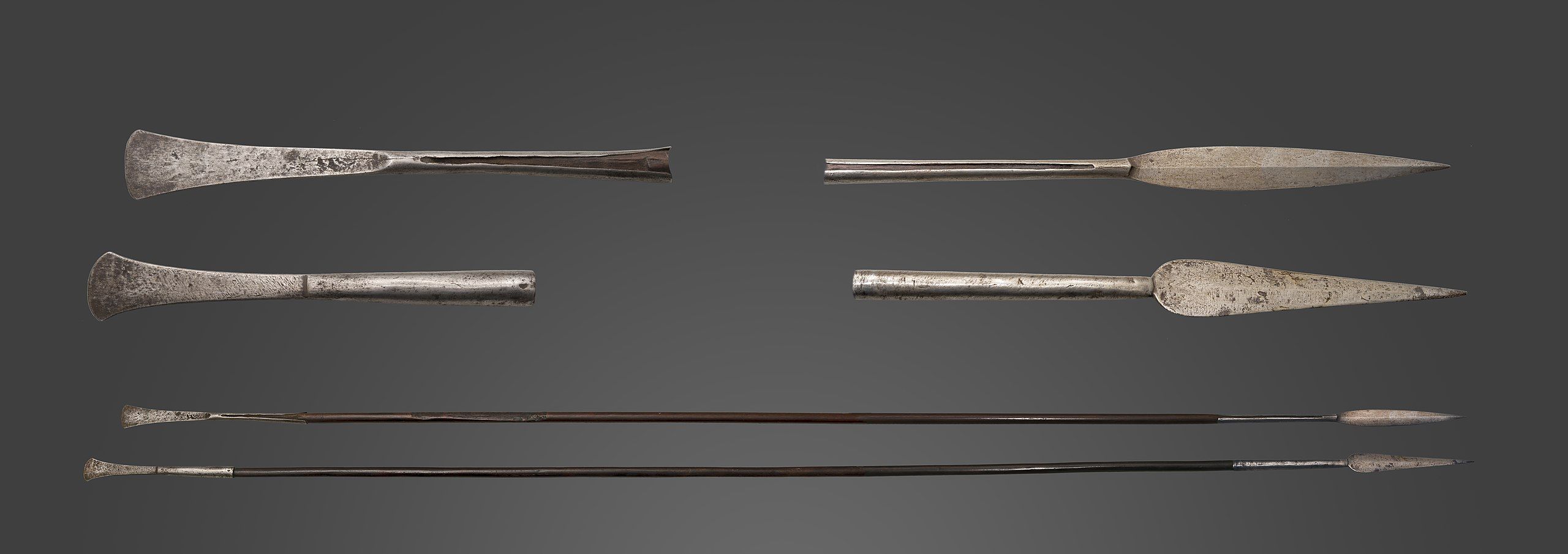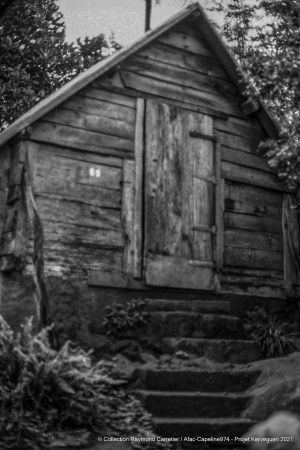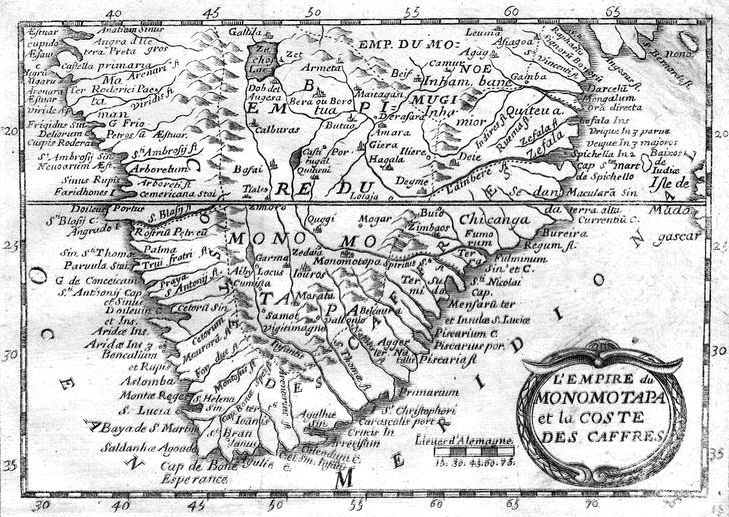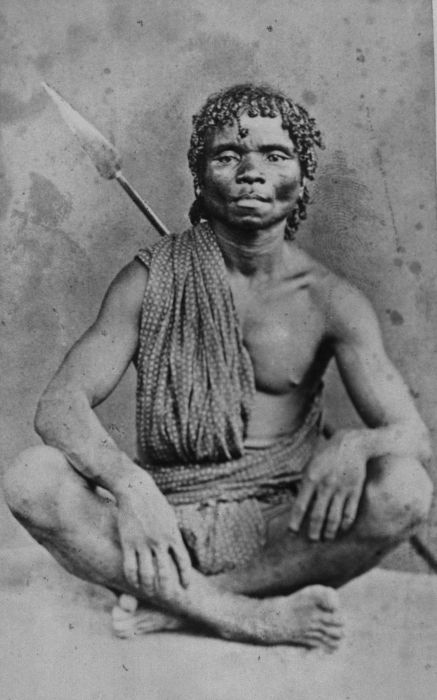Jamali, sugarcane's Guard, 1861
Discovering the "cafre" guards
The man
Jamali pictured here is a "cafre".
This word comes from the Arabic "kafir", meaning infidel, i.e. non-Muslim.
Note his imposing build, his sharp spear to defend the fields or the huts, and the watchful look of the guard who watches for possible dangers from a higher point.
The Lamb, Malagasy loincloth ?
The cloth that envelops it is a loincloth, wrapped around the loins and tied at belly level. In Reunion Island, the words "langouti" were used in the past to designate a loincloth that was passed between the legs, in the manner of long trousers, for the Indians, and "lamba", the Malagasy word for loincloth, an abbreviation of "lambahoany". The lamba is traditional, and it seems to be the garment represented here: the men wore this rectangular piece of cloth, made of raw canvas, decorated with coloured stripes. It is also a symbolic garment: engaged couples exchanged lambas (pronounced "lamb", without the final "a"!), and the one who receives it keeps it until his death.
Note that Jamali goes barefoot.
An archetype quoted and repeated
Antoine Roussin (1819-1894) was inspired by this watercolour to make a lithograph, entitled "Le Garde-champêtre de Bourbon", kept in the Musée de Villèle, Ile de La Réunion
Here is the description of the guards given by Father Jouen, Jesuit and Prefect Apostolic of Madagascar, in a letter of 1853, transcribed in "Madagascar et ses deux premiers évêques...", by Amand-René Maupoint, Paris, 1864.
"The assegai or spear which they carry when they leave their hut, shines on their shoulders; their gait is proud; their black body, of fairly good size for the most part, is half covered by a cloth made by themselves, and with which they drape themselves in the ancient manner; Their hair, artfully plaited, intermingled with pearls, animal teeth, and a few silver or copper objects, makes a good enough impression; but the ox or sheep fat with which they coat them, renders them somewhat disgusting by the bad smell. "
"Apart from that, the whole of their costume has something pleasant and noble in its simplicity. You would think you were transported to the first ages of the world, and find men as described by the ancients."
Father Jouen describes his impressions, rather admiring, from his meeting with the Sakalave people, one of the many ethnic groups on the large island of Madagascar
Photograph of a Malagasy Sakalave Warrior from Madagascar taken between 1864 and 1866 - Source : Troopen Museum Nederlands collections - Wikimedia Commons

19th century Malagasy's Assegai
To access the Museum, click here
A systemic 'anthropologist' view
This is how Gabriel Le Coat de K/veguen judged his employees in 1858, on the occasion of a visit report on his establishment in Saint-Louis.
"The best workers are the Indians. The Malagasy are quite intelligent but stubborn. The Cafres are very hard at work, but slow; the freedmen seize the slightest pretext to do nothing".
The Guard's task
Being a "guard" meant watching over the cane fields, and also the surroundings of the camp of the hired workers. This delicate task was reserved for muscular and trustworthy men: sometimes Malagasy, and especially Cafres.

The fields and huts of the indentured servants could fall prey to arson and/or theft, committed either by the "maroon" slaves before 1848, or by a few "Petits Blancs" who had taken refuge in the upper parts of the island. Both could be driven to these acts by hunger or extreme destitution.
What did they want? Chickens, ducks, tools, and... clothes, of course!
Opposite, one of the last huts, photographed by Raymond Carretier, our architect friend, in 1990. It was located on the site of the former indentured labour camp, on the left bank of the Rivière d'Abord, a few dozen metres from the former Bel-Air sugar factory.
Built of matted wood, it measured 4 metres x 4 metres, with a single door as an opening. Inside, there were one or two beds made of planks, a mattress made of "goni" (thick jute cloth), and a chest for storing clothes and objects that were important to people.
Around the hut, a small area was used as a small garden, where one could grow some vegetables, breeds, and raise poultry.
More details on the "cafres" and Madagascar

The Monomotapa Empire
The Coffee Coast, in the south-east of the African continent, was a continuous source of slaves for both Arab traders linked to the Monomotapa Empire and European traders from the 18th century onwards.
< opposite: source map "The Empire of Monomotapa and Coste des Caffres" - 1688 :the New York Public Library Digital Collections
Multi-level slavery
Even the inhabitants of Madagascar, some of whom were themselves objects of the 'trade', practised slavery on their own account, as Father Jouen relates in his letter quoted above:
"Only warriors armed with rifles and assegais were encountered; many carried bows and arrows: they were Mozambican slaves".
The Silk Road
Madagascar is 1580 km long and 580 km wide, i.e. 587,000 km2 , a territory larger than France today! It is known as "The Big Island".
It is mentioned in ancient documents as a known stop on the silk route. The traditional old lambas are often made from wild silk spun (website in French) and woven on the large island of the Mascarene Islands.
> Opposite, a stall of classic lambas in a market in Fort Dauphin made from genuine wild silk from Madagascar, with patterns and natural dyes from local agriculture.

Note
We know the number of gardes-champêtres for the K/veguen properties on Reunion Island in the present-day communes of Saint-Louis (2), Saint-Pierre (1) and Le Tampon (2), for example. It is worth noting that they did not wear the blue cloth clothing characteristic of the other workers of this rich sugar-owner.
It is interesting to note that the guards have fully preserved their clothing traditions.







